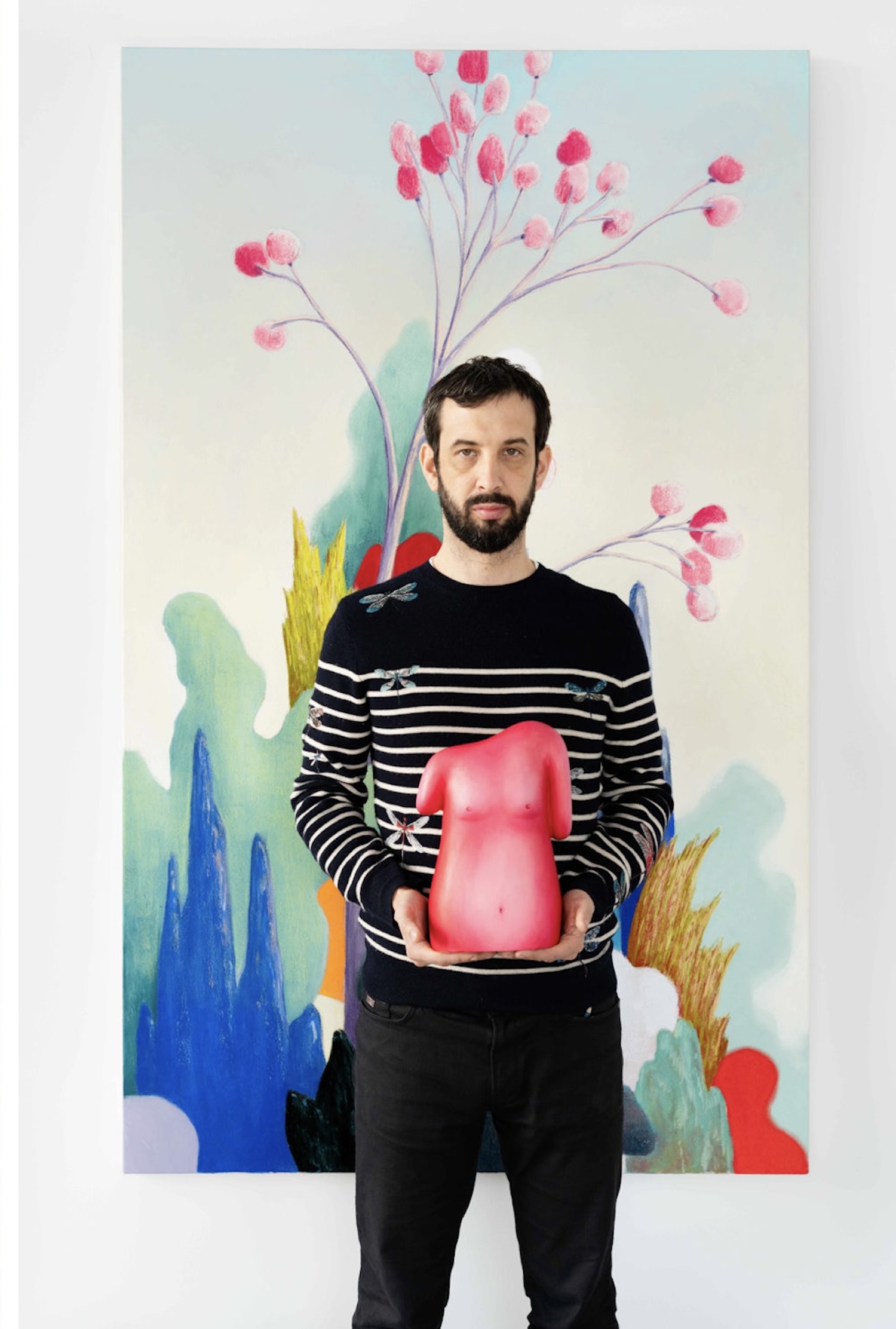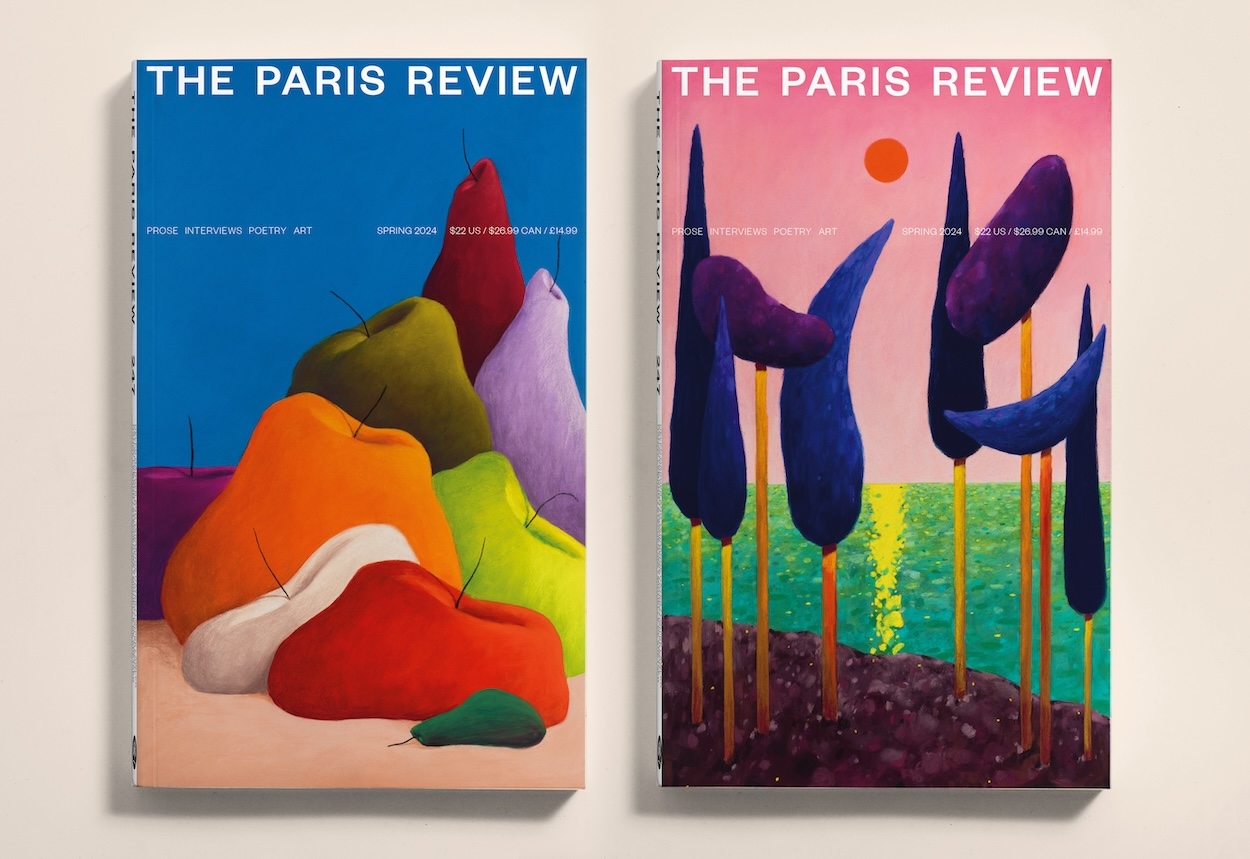We’re used to seeing Nicolas Party in illustrious company, past issues of Surface included. Yet the latest launch that brings the Swiss artist’s name to fore isn’t a gallery opening or an art fair, it’s the Paris Review’s new Spring issue, which features an Art of Poetry interview with Alice Notley. Party created two captivating pastel paintings to cover the newsstand and subscriber-only issues of the literary magazine.
One he describes as “a sunset landscape,” which he admired from his studio on a recent call with Surface to discuss the commission; the other is a still life of “melty, odd, colorful fruits.” Both can be purchased as magazine issues or poster prints. In an interview with Surface, Party chats about leveraging the art world’s largesse to fund other art forms, what he’s reading, and the kinds of books that “stay with you forever.”
This interview has been edited and condensed.
Artists can be very selective about the commissions they accept. Why did the Paris Review make sense to you?
Usually the commissions that artists will be a little more careful with are very commercial collaborations. Obviously, [with] the Paris Review, it’s really not the case. It’s a cultural icon. So if it means more collaboration that will highlight so many creative writers and poets and also actually making art and the covers, it’s really an honor to be part of this wave of tradition in magazines. The Paris Review is more than a “commission.”
What’s your connection to the genre?
I didn’t say, “Oh, I’d love to do the poetry issue,” but I do read books and poetry. My wife is a writer and she reads a lot of poetry, and we share that together. If there’s anything in the writing field, poetry is probably the closest to painting because it uses words in a much more open way than journalism or nonfiction writing. Poetry is like a field where words can start to escape their very close meanings and definition. It’s where writers explore that.
One of the reasons I love painting is that it’s hard to define what’s happening. In poetry, it’s very similar. The relationship between the reader and the piece is big in shaping their perception of the poem.

